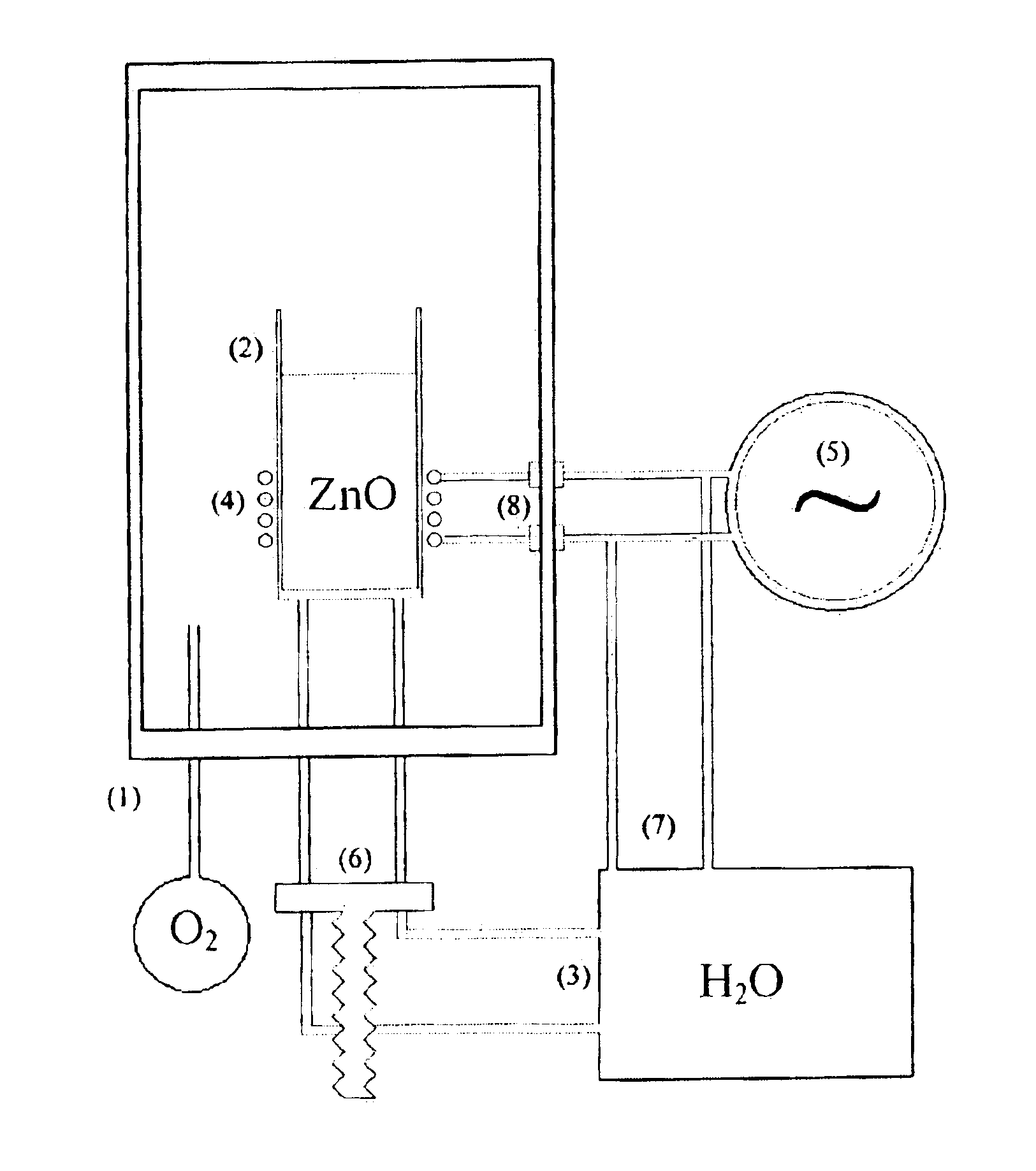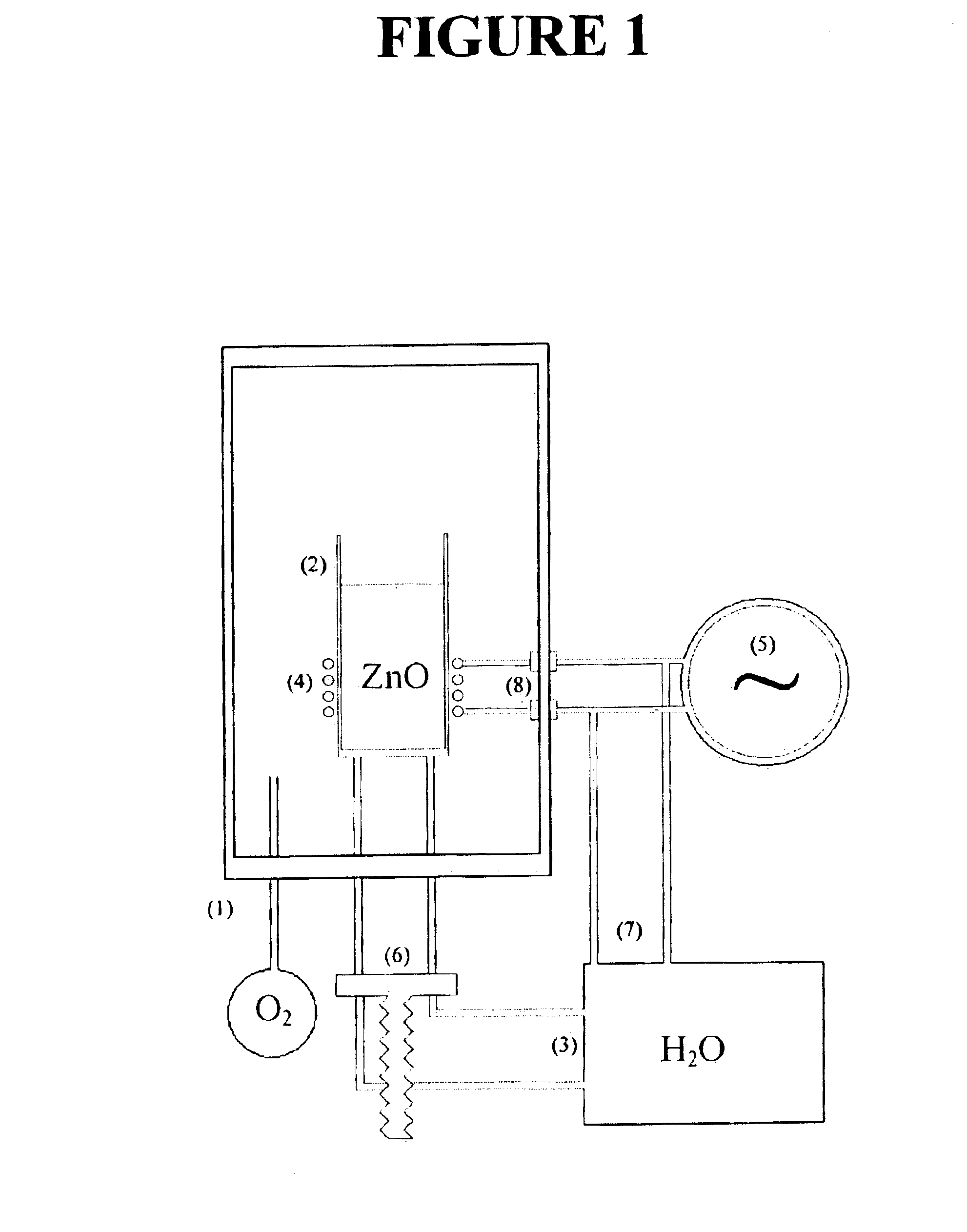Semi-insulating bulk zinc oxide single crystal
- Summary
- Abstract
- Description
- Claims
- Application Information
AI Technical Summary
Benefits of technology
Problems solved by technology
Method used
Image
Examples
Embodiment Construction
[0015]The crystal growth apparatus, shown in FIG. 1, utilizes a modified Bridgeman growth technique including a pressure vessel that contains pressurized oxygen from a source (1). This apparatus is further disclosed in U.S. Pat. No. 5,900,060 issued May 4, 1999 to Jeffrey E. Nause et al., which is incorporated by reference herein as if set forth in full hereinafter. The apparatus also includes a cooling unit (2) that is situated in the pressure vessel. The cooling unit receives a coolant flow from outside of the vessel (3) and has cooled surfaces that define an enclosure, which receives the ZnO with proper dopant concentration (1015-1020 atoms / cc).
[0016]The apparatus further includes an inductive heating element (4) situated in the vessel, which is coupled to receive radio-frequency (rf) power externally to the vessel (5). A seed crystal of appropriate orientation can be placed inside the cooling unit (2). A precursor containing a stoichiometric quantity of ZnO, optionally including...
PUM
 Login to View More
Login to View More Abstract
Description
Claims
Application Information
 Login to View More
Login to View More - R&D Engineer
- R&D Manager
- IP Professional
- Industry Leading Data Capabilities
- Powerful AI technology
- Patent DNA Extraction
Browse by: Latest US Patents, China's latest patents, Technical Efficacy Thesaurus, Application Domain, Technology Topic, Popular Technical Reports.
© 2024 PatSnap. All rights reserved.Legal|Privacy policy|Modern Slavery Act Transparency Statement|Sitemap|About US| Contact US: help@patsnap.com









